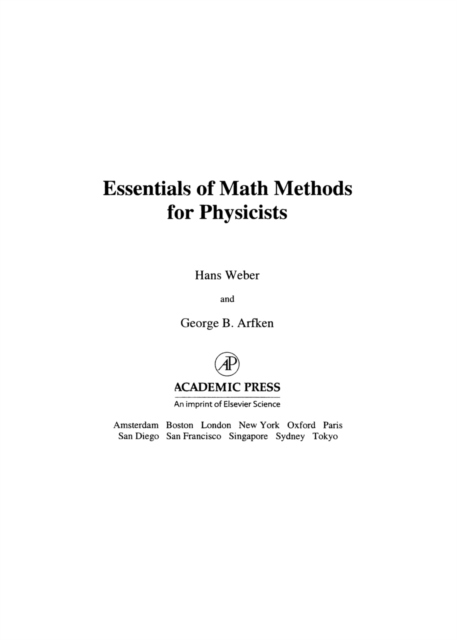
Essentials of Math Methods for Physicists PDF
by Hans J. Weber, George B. Arfken
Description
Essentials of Math Methods for Physicists aims to guide the student in learning the mathematical language used by physicists by leading them through worked examples and then practicing problems.
The pedagogy is that of introducing concepts, designing and refining methods and practice them repeatedly in physics examples and problems.
Geometric and algebraic approaches and methods are included and are more or less emphasized in a variety of settings to accommodate different learning styles of students. Comprised of 19 chapters, this book begins with an introduction to the basic concepts of vector algebra and vector analysis and their application to classical mechanics and electrodynamics.
The next chapter deals with the extension of vector algebra and analysis to curved orthogonal coordinates, again with applications from classical mechanics and electrodynamics.
These chapters lay the foundations for differential equations, variational calculus, and nonlinear analysisin later discussions.
High school algebra of one or two linear equations is also extended to determinants and matrix solutions of general systems of linear equations, eigenvalues and eigenvectors, and linear transformations in real and complex vector spaces.
The book also considers probability and statistics as well as special functions and Fourier series.
Historical remarks are included that describe some physicists and mathematicians who introduced the ideas and methods that were perfected by later generations to the tools routinely used today. This monograph is intended to help undergraduate students prepare for the level of mathematics expected in more advanced undergraduate physics and engineering courses.
Information
-
Download - Immediately Available
- Format:PDF
- Pages:960 pages
- Publisher:Elsevier Science
- Publication Date:11/09/2013
- Category:
- ISBN:9781483225623
Information
-
Download - Immediately Available
- Format:PDF
- Pages:960 pages
- Publisher:Elsevier Science
- Publication Date:11/09/2013
- Category:
- ISBN:9781483225623






